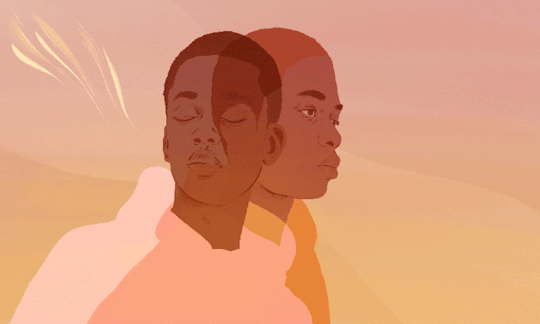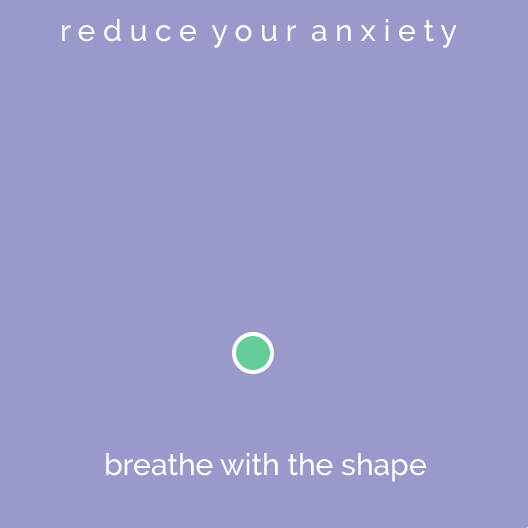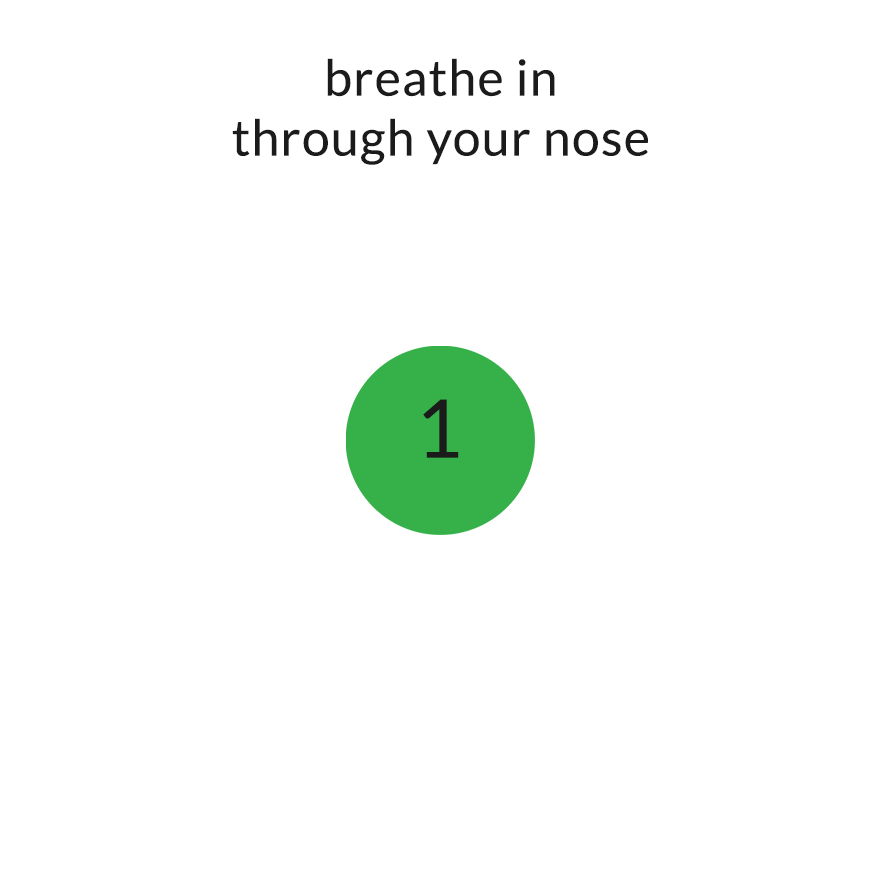

Besides all the worrisome health problems this may cause, which Nestor details in his book, our ineptitude at breathing may have another big consequence — contributing to our anxiety and other mental health problems.
“The rate and depth we breathe at is a huge determinant of our mental state,” says Elissa Epel, a professor at UC San Francisco.
Researchers like Epel are exploring how using breathing techniques — some new, some ancient — can help people stave off anxiety. What they’re discovering is that breathing could be an overlooked key to finding more calm and peace.
In a 2017 study, highly anxious people were assigned to take a course in diaphragmatic breathing relaxation and they practiced twice a day at home. Diaphragmatic breathing, or belly breathing, involves breathing deeply into the abdomen rather than taking shallow breaths into the chest. After eight weeks, they reported feeling less anxious compared to a group that didn’t receive the training. They also showed physical signs of reduced anxiety, including lower heart rate, slower breathing and lower skin conductivity.
So, a regular breathing practice might help you feel calmer in your everyday life. But other studies suggest that focusing on your breathing in moments of acute stress could also be useful.
In an older study published in the Journal of Personality and Social Psychology, researchers brought participants into the lab and told them they were going to receive electric shocks. Some of the participants practiced breathing slowly before the shocks (which were actually never administered), while others focused on breathing at a normal rate or didn’t regulate their breathing at all. The slow breathers — breathing about eight breaths per minute — not only reported feeling less anxious while anticipating the pain, they also showed lower anxiety on a physical level, as measured by sweat and blood flow to the fingers.
Another study followed up on this research and tested three different breathing rhythms: fast inhaling with slow exhaling; slow inhaling with fast exhaling; or evenly paced inhaling and exhaling. Here, the fast inhaling with slow exhaling (2 seconds in, 8 seconds out) was the most effective at relieving both the physical and mental experience of anxiety.
Of course, breathing is a major component of many meditation and Buddhist mindfulness practices, and it may be a key reason why they work. In a small 2017 study, researchers asked people with anxiety disorder to try either alternate nostril breathing or mindful breath awareness for 10 minutes, two days in a row. They found that practicing alternate nostril breathing was about three times as effective at reducing people’s feelings of anxiety.
These benefits felt profound to the participants in a small, 12-week yoga breathing class in the United Kingdom. According to researchers from the University of Southampton:

“If we’re breathing really shallowly and fast, it causes our nervous system to up-regulate and we feel tense and anxious,” says Epel. “If we’re breathing slowly, it actually turns on the anti-stress response.”
Technically, breathing influences the sympathetic (“fight or flight”) and parasympathetic (“rest and digest”) branches of our nervous system, and certain techniques can promote more parasympathetic calm and relaxation. Some may also cause us to release hormones like prolactin and possibly oxytocin, the feel-good hormone of love and bonding.
“[Breathing techniques] are allowing you to consciously take control of your breathing so you can take control of your nervous system so you can take control of your anxiety,” says Nestor. “When we breathe in a certain way, we are sending messages to those emotional centers of our brain to calm down.”
Other techniques, like tummo — a yogic breathing practice that involves forceful or gentle breathing, abdominal contractions during breath holding, and visualization — actually amp up the sympathetic nervous system, spiking our body’s stress to activate a deeper relaxation afterward, similar to how tensing a muscle and then letting it go works.
This is similar to the kind of breathing that “Iceman” Wim Hof teaches his followers, a method that Epel is currently researching. Hof is famous for his seemingly superhuman feats, like climbing Mount Kilimanjaro in shorts and changing his immune response to E. coli, which he attributes to a finely tuned control over his own physiology thanks to breathing practices and more.
Fast breathing can be triggering for people with anxiety — causing the tingling limbs and lightheadedness that often accompany panic attacks — but that’s part of the point. When you breathe fast and start to feel symptoms you normally associate with anxiety, it may help you re-interpret those symptoms in a less threatening way. They become less worrisome because they have a clear cause, the same way that an elevated heart rate during exercise doesn’t bother us. And if you can connect anxiety to faulty breathing habits, it means you can change the way you breathe and potentially see some improvement.

Many of the techniques that have been formally researched are derived from pranayama, yogic breathing that dates back to ancient India:
- Ujayyi: Deep breathing with a narrowed throat, creating an ocean-like sound, often recommended while doing yoga asanas.
- Bhastrika, or “bellows breath”: inhaling and exhaling forcefully.
- Nadi Sodhan and Anulom Vilom: Types of alternate nostril breathing, where air is inhaled in one nostril and exhaled through the other, sometimes with breath holding.
There are also a variety of “box breathing” practices, derived from the pranayama Sama Vritti, where you inhale for four seconds, hold for four, exhale for four, hold for four, and repeat. Other timed techniques include 4-7-8 breathing, often recommended to help you fall asleep.
In the same way that mindfulness practice isn’t just meditation, breathing as a practice isn’t just waking up every morning and doing 10 minutes of box breathing. It’s also important to be aware of the way you breathe in everyday life (or while you’re checking your email).
In Breath, Nestor’s tips boil down to a short list of general principles, including make sure to breathe through your nose and not your mouth, slow your breathing down (to five or six seconds in and five or six seconds out), and extend your exhales for even greater relaxation.
Now so much talk about breathing might have you feeling anxious — that’s how I felt, at least, while reading about all the ways that our breathing habits are faulty. In one study, the researchers noted that anxious people were skeptical in the beginning of the experiment and had some difficulty practicing. But this group still went on to feel better at the end of 12 weeks of practice.
All this research illustrates just how much influence our body has on our mind. Modern life brings many things to be worried about, but, as Nestor writes, not being able to breathe remains one of our deepest and most primal anxieties. If somehow the way we’re breathing is signaling to our brains that something is wrong, it’s no wonder we feel anxious — and it’s no wonder all these breathing techniques can bring such profound healing.
This article was originally published on Greater Good, the online magazine of the Greater Good Science Center at UC Berkeley.



Repeat it as long as you need.
Often during anxiety or panic attacks we find ourselves starting to hyperventilate and by focusing on your breathing and regulating it intentionally it starts to assist in getting that breath control back.
- We humans One way to calm an anxious mind: Notice when you’re doing OK
- Science Mind going a million miles a minute? Slow down with this breathing exercise
- We humans 7 strategies to help you live with uncertainty
- Tech 3 ways that tech helps me handle my anxiety and depression


No comments:
Post a Comment